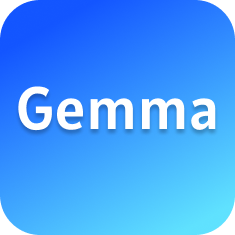Exploring Google’s Gemma: The Next-Gen Language Models
Introduction
Google’s Gemma, a lightweight, state-of-the-art open language model (LLM), is a part of the same research used in the creation of Google’s Gemini models. Gemma family equips models with two sizes, the 2B and 7B parameters versions, where each has a base (pre-trained) and instruction-tuned modifications.


| Key Takeaways | Details |
|---|---|
| Open Language Model | Gemma is an open language model developed by Google. |
| 2B and 7B Parameters | Gemma has models with 2B and 7B parameters – both pretrained and instruction-tuned. |
| Device Compatibility | Gemma models can run on devices like desktops, laptops, IoT, mobiles, and on the cloud. |
| AI Principles | The models have been created with AI principles and come equipped with responsible AI toolkits for safe usage. |
Versatility and Compatibility
Besides being lightweight, Gemma exhibits extreme versatility by supporting a multitude of tools and systems. This includes ✅multi-framework tools, ✅ cross-device compatibility, and ✅ up-to-the-minute hardware platforms. The optimization of Gemma models extensively caters to Google Cloud, but it’s also compatible with NVIDIA GPUs.
Note: “Gemma is optimized not just for Google Cloud, but various platforms, including NVIDIA GPUs, showcasing its versatility.”
Lists of Devices Gemma Models can run on:
- Laptops
- Desktops
- IoT
- Mobile Devices
- Cloud
Accessibility and Availability of Models
“Ease of access for users is a priority!”
Gemma guarantees free access, which is available in Kaggle, to assist in a wide array of platforms like a free tier for Colab notebooks, and a whopping $300 in credits for the first-time users of Google Cloud. To give researchers a nudge in the right direction and accelerate their projects, Gemma even paves the way for an application for Google Cloud credits, that goes as high as $500,000.
Gemma Models and Developers
Developers have a free hand at accessing the Gemma models through a multitude of channels and platforms. The avenues to access these models range from Kaggle Models to Hugging Face’s Inference Endpoints. Furthermore, they can even bring Gemma into Google Cloud via Vertex AI or Google Kubernetes Engine (GKE), using Text Generation Inference and Transformers.
Applications of Gemma Models
Employing Gemma models opens the gate for various applications like text generation, summarization, and retrieval-augmented generation (RAG). They are on point for a diverse category of text-generation tasks, like question answering, and can be bespoke using tuning techniques to outshine in specific tasks.
FAQs
- What is Google’s Gemma?Google’s Gemma is a lightweight, state-of-the-art open language model based on research and technology used in creating Gemini models. It supports multi-framework tools and cross-device compatibility, and is optimized for Google Cloud.
- How can developers access Gemma models?Developers can access Gemma models via Kaggle, Google Cloud, and Hugging Face’s Inference Endpoints, among others.
- In which devices can Gemma models run?Gemma models can run on various devices, including laptops, desktops, IoT, mobile, and cloud.
- What are the applications of Gemma models?The Gemma models have myriad applications, including text generation, summarization, and retrieval-augmented generation (RAG).
- What tuning techniques can be used on Gemma models?Fine-tuning techniques such as LoRA tuning and distributed training can be applied to Gemma models.
